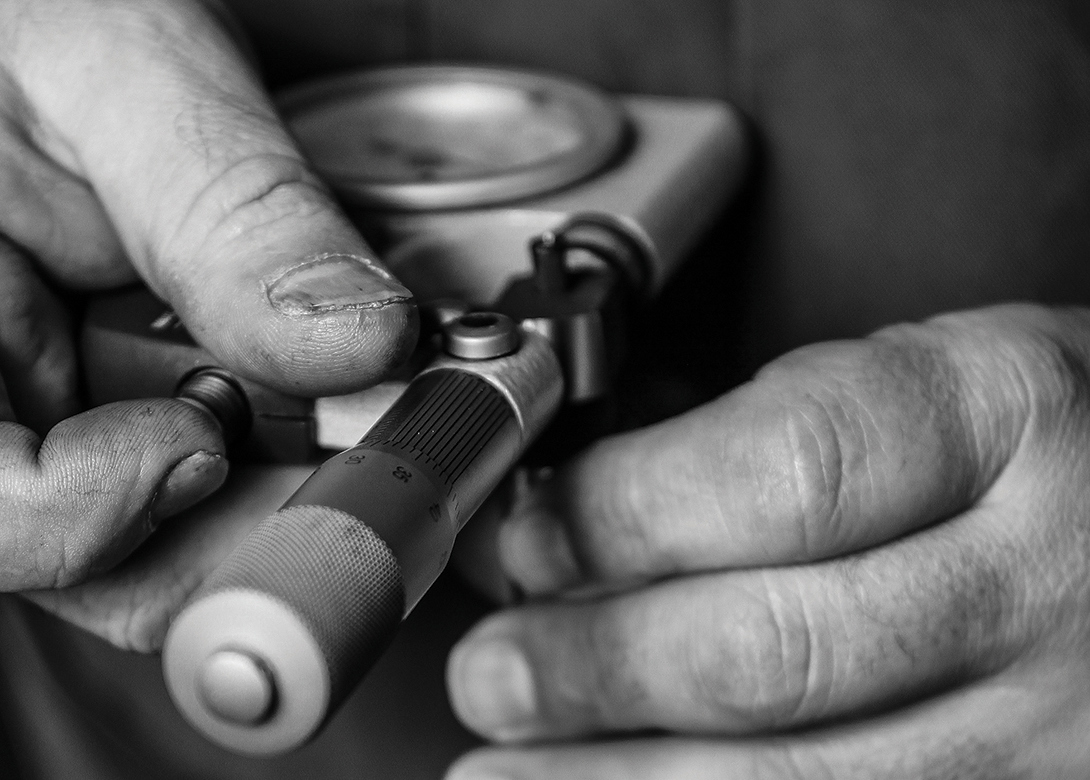
By Tanja Kavčič, CEO, and Karsten Kranz, sales manager, Precisium d.o.o
Attribute, dimensional, limit and testing gauges are used to provide conformity results on whether products are in accordance to tolerance expectations. Such mechanical equipment determines status into good or scrap, based on the GO/NO GO principle (Taylor’s principle) rather than defining specific numeric value.
For identifying specific dimensions, one may also use calipers or micrometres. However, those tools must be accurate and inspected periodically by accredited laboratories. Besides, they need to be handled carefully, adjusted, and read correctly, which can be very time-consuming. An alternative, but even more time-consuming procedure, is investigation using a coordinate measuring machine (CMM). Here the manufactured piece must be taken to the measuring laboratory, where it is reviewed by a specific technician in measurement technology.
With the help of attribute gauges, dimensions of working pieces can be easily and quickly controlled. Opposite to the above mentioned methods, little skill and knowledge are required to perform the checking procedure. It is a low cost solution and inspection is fast, easy to handle and can be carried out directly during the production process.
Limit gauges serve as a metrological object of comparison, the so called reference standard for previously defined dimensions and shapes. They correspond to a specific measuring standard and are used during or after the production process. A workpiece hereby is not ‘measured’ but ‘checked’. Therefore, one cannot read the specific numerical value of the dimension but rather compare the setpoint value with the actual property of the component in question. While an explicit statement is made (GO or NO GO) additional sources of error can be excluded. Followed tolerances are based on given standard norms or special design requirements. A testing gauge is a precision device with no moving parts that can be used to check the correct dimensions of an object or its specific properties.
Different kinds of gauges are applied for diverse applications, such as:
Using a snap gauge
To use a snap gauge the operator simply pushes the snap gauge to the diameter of the shaft. The front part (test surface ‘GO’) should fit the shaft, if the dimension is correct within the predefined tolerance range. A too big shaft diameter causes the snap gauge not to fit the shaft meaning that the diameter of the shaft must be reduced further. The rear part (test surface ‘NO GO’) should not match with the shaft. If it does the diameter is too small.
Certain dimensions cannot be measured using ordinary measuring instruments, such as micrometres or calipers, during the production process – such as cones or specific hole positions. Examination of such dimensions with custom-made gauges is the simplest, most accurate and lowest cost solution.
Design of custom-made attribute gauges
The development of gauges requires ingenuity, as well as knowledge of gauge design standards, materials and manufacturing technologies. Furthermore, gauge manufacturing depends on excellent production of equipment, proficiency and experience of the operators, and good measuring equipment.
The most important ‘ingredients’ for designing tailor-made gauges are the specific measuring dimensions one wants to verify. Therefore, it is necessary to take into account both dimension tolerances and position tolerances. Besides, it is important to know the permitted rate of wear; the material of the inspected subject; and the frequency of periodic testing. All factors are relevant for an appropriate design of the gauge with respect to functionality and tolerance accuracy.
For the most common gauges some international design standards exist that are specified in DIN and ISO norms. Plug gauges for example have quite a few standards prescribing external shapes, lengths, and appearance of measuring surface, as well as handles. Other special gauges must be developed according to the requirements and wishes of the customer. Clients may have an idea of how the testing should be performed and what the fixture or hand checking tool should look like, but it might happen that such ideas cannot be transformed into reality or the price is much higher than necessary. Therefore, there is an advantage if the manufacturer of the gauges also carries out its development considering all needs for final use. Clients participate in the gauge development process, review the gauging concept and if convinced confirm design and production. Only after final consent does gauge production start.
www.precisium.si

Will joined Fastener + Fixing Magazine in 2007 and over the last 15 years has experienced every facet of the fastener sector - interviewing key figures within the industry and visiting leading companies and exhibitions around the globe.
Will manages the content strategy across all platforms and is the guardian for the high editorial standards that the Magazine is renowned.
Don't have an account? Sign Up
Signing up to Fastener + Fixing Magazine enables you to manage your account details.